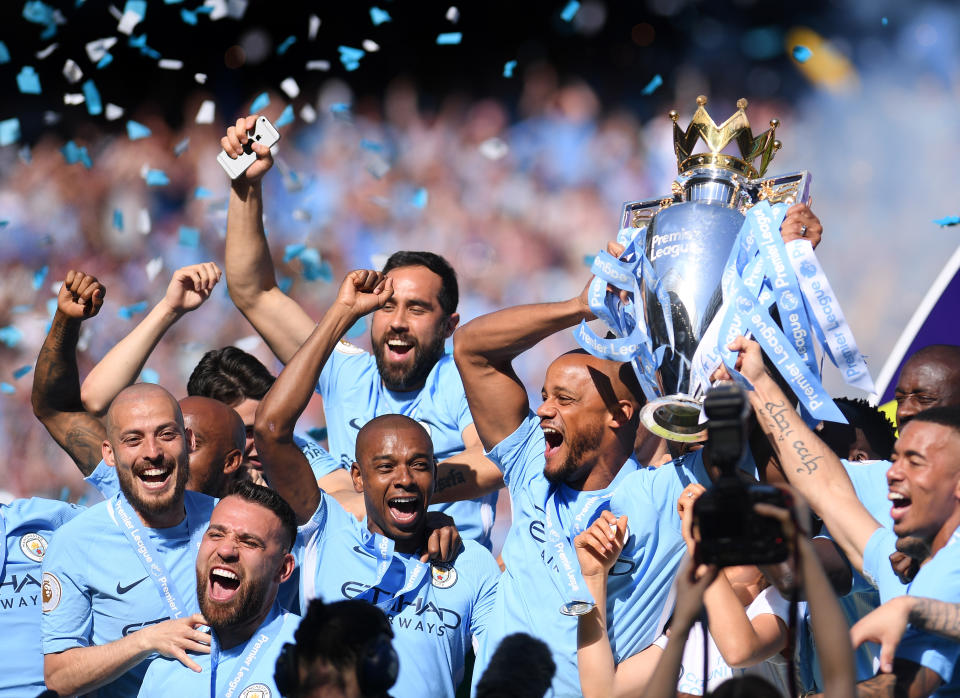How the English Premier League embraced TV to become global soccer's behemoth

For Premier League fans, getting into the holiday spirit isn’t hard. After all, their beloved league showers them with gifts in the form of 10 days of games in the 14 days from Dec. 21 through Jan. 3. And while this tradition is tough on teams – and the lack of a winter break is arguably one of the reasons English teams have struggled to win in Europe during the second half of the season in recent years – it underscores why the league has become the most popular in the world, in any sport.
So, for that matter, does a new book. The Club: How the English Premier League became the Wildest, Richest, Most Disruptive Force in Sports, by Joshua Robinson and Jonathan Clegg, both of the Wall Street Journal, meticulously traces the history of the Premier League from its first secretive whispers in the 1980s – it was a breakaway circuit from the stodgy old Football League’s First Division, after all – to the dazzling present. And their deeply-reported, well-sourced retelling is instructive when considering the EPL’s runaway success, which is why so many are glued to their TVs over these holidays.
The Premier League is the biggest sports league in the world simply because it was the first soccer league to recognize the potential of its product as, well, a product. It was perhaps inevitable that it should be a soccer league that would dominate the world’s most popular game. And it was likely that it would be one of Europe’s legacy leagues. But given how far the English league lagged behind Italy’s Serie A, Spain’s La Liga and perhaps even Germany’s Bundesliga in the late 1980s, it was far less evident that it should win out as the market-leader.
In fact, English soccer was in such a sorry state just then that it seemed downright improbable that it should ever thrive again. The clubs were all broke or close to broke. Attendance was dwindling. The stadiums were crumbling and very real death traps, with hundreds of lives lost in stampedes and fires. Owners and directors were mostly local business owners who lacked knowhow and vision. And a kind of revenue-sharing collective with the three lower tiers stifled all progress and depressed the incentive to innovate.
But then a series of events coincided to reshape the sport. First, a small band of savvy young executives at some of the big clubs saw the untapped potential in their teams to market and boost revenues. David Dein of Arsenal, Irving Scholar of Tottenham Hotspur and Martin Edwards of Manchester United all felt that piles of cash were being left on the table. They pushed for improvements to their stadiums, revamped merchandise sales and, most importantly, saw the promise in television.
Inspired by the NFL’s landmark $2 billion TV contract in 1982, a small group pushed the rest of the top-tier clubs to take television seriously as a source of revenue. The received wisdom in the First Division until then had been that putting games on TV would harm live attendance. So the league had grudgingly agreed to a grab-bag of highlights deals and one arrangement that allowed for live games to air, but never in their entirety. One season, there wasn’t any soccer on TV at all, as a deal couldn’t be struck with the broadcasters. For a time, every club in English professional soccer got the same annual TV payout: £50.
And then, just as the big clubs had grown fed up with sharing their slowly increasing riches with not only their own division but three other tiers of professional teams, Rupert Murdoch came along. In 1992, his newfangled Sky satellite broadcaster blew its competitor out of the water with a bid of £304 million over five years to air the games of the newly-established Premier League, which had broken away from the Football League but remained sanctioned atop the professional pyramid, thanks to the Football Association’s backing. Sky subsequently built its entire subscription channel around the league, with endless analysis and build-up.
Finally, and just as crucially, a regional steel magnate took over uncharismatic Blackburn Rovers and quickly spent his way to a Premier League title in 1994-95. It only cost about £50 million to do back then. While it riled up the traditionalists, who were horrified that something so vulgar as money could be behind success in soccer, it set a precedent, even if Blackburn soon collapsed back into its old pedestrian existence. It established that clubs were for sale and that outside investment was fair game.
Between those three broad strategies that can be inferred from The Club – monetizing soccer teams as brands; embracing television; and welcoming rich, new owners – the Premier League positioned itself to capitalize on both soccer and television’s boom better and more quickly than anybody else did. Thus, it not only bypassed the continental competitors it had lagged behind, but built such a lead in global following and affinity that it’s now hard to imagine the other leagues catching up anytime soon.
Which all goes back to explaining the Premier League’s jam-packed holiday schedule during a time when every other league of consequence is either on a winter break or in its off-season. Before all else, the English mega-circuit seeks to please its customers. And they are eager for games to watch when they have time off from work or their studies.
So the Premier League does what it’s done best for a quarter-century: give the fans what they want.
– – – – –
Leander Schaerlaeckens is a Yahoo Sports soccer columnist and a sports communication lecturer at Marist College. Follow him on Twitter @LeanderAlphabet.


